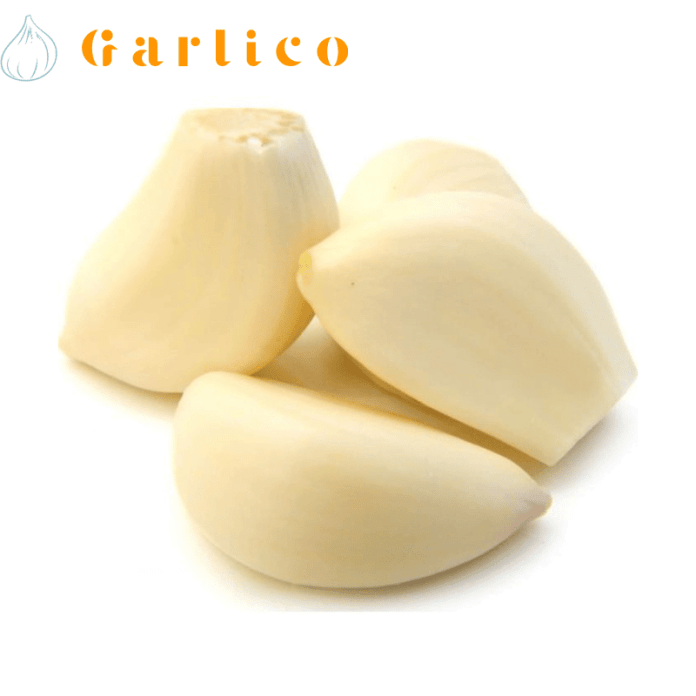Introduction
When it comes to cooking, garlic is an essential ingredient that adds depth and flavor to a wide range of dishes. While traditional garlic bulbs are well-known and widely used in the culinary world, there is another variety that offers a unique twist: elephant garlic. Despite its name, elephant garlic is not a true garlic, but rather a close relative of the leek. With its mild flavor, large cloves, and versatile nature, elephant garlic has gained popularity among chefs and home cooks alike. In this article, we will explore the versatility of elephant garlic as a culinary ingredient, including its flavor profile, health benefits, and various ways to incorporate it into your cooking.
- Elephant Garlic: An Introduction
a. What is Elephant Garlic? Elephant garlic (Allium ampeloprasum var. ampeloprasum) is a plant species that belongs to the Allium genus, which includes onions, garlic, and leeks. Despite its name, elephant garlic is not actually garlic, but a variant of the leek species. It features large bulbs and cloves, similar in appearance to garlic, but with a milder flavor.
b. Flavor Profile Elephant garlic offers a unique flavor profile compared to traditional garlic. While it retains a garlic-like essence, its taste is milder and less pungent. The flavor is often described as sweeter, more subtle, and less intense, making it a versatile option for those who prefer a milder garlic taste.
- Health Benefits of Elephant Garlic
a. Nutritional Value Elephant garlic is not only a flavorful ingredient but also packed with several health benefits. It is low in calories and fat while being a good source of essential nutrients. It contains vitamins C and B6, as well as minerals like manganese, calcium, and iron.
b. Antioxidant Properties Like traditional garlic, elephant garlic contains antioxidants that help protect the body against oxidative stress. These antioxidants can assist in neutralizing harmful free radicals, reducing inflammation, and potentially lowering the risk of chronic diseases.
c. Potential Cardiovascular Benefits Some studies suggest that garlic, including elephant garlic, may have a positive impact on cardiovascular health. It may help lower blood pressure, reduce cholesterol levels, and improve overall heart health. However, further research is needed to fully understand the extent of these benefits.
- Culinary Uses of Elephant Garlic
a. Raw Consumption Elephant garlic can be consumed raw, adding a milder garlic flavor to salads, dressings, and dips. Finely minced or sliced, it can provide a subtle garlic kick without overpowering other ingredients. It is particularly useful for those who find traditional garlic too strong or sharp.
b. Roasting Roasting elephant garlic brings out its natural sweetness and enhances its flavor. Simply slice the bulb in half horizontally, drizzle with olive oil, season with salt and pepper, and roast in the oven until golden and tender. The roasted cloves can be spread on bread, mixed into mashed potatoes, or used as a topping for grilled vegetables.
c. Sautéing Sautéing elephant garlic is another popular cooking method. Heat some oil or butter in a pan, add thinly sliced or minced garlic cloves, and cook until fragrant and lightly golden. This sautéed garlic can be used as a base for various sauces, stir-fries, pasta dishes, or as a flavoring for roasted meats.
d. Pickling Pickling elephant garlic is a great way to preserve its flavor and extend its shelf life. Combine equal parts vinegar and water, add some salt, sugar, and desired spices (such as peppercorns or chili flakes), and bring the mixture to a boil. Pour the hot liquid over peeled elephant garlic cloves in a sterilized jar and let it cool. The pickled garlic can be enjoyed on its own, used as a tangy addition to salads, or served alongside charcuterie and cheese boards.
e. Flavored Oils and Butters Infusing oils or butter with elephant garlic can add a delightful hint of garlic flavor to your dishes. Simply heat the oil or melt the butter over low heat, add thinly sliced or minced elephant garlic cloves, and cook gently until the garlic is fragrant. Remove the garlic, and you are left with a subtly flavored oil or butter that can be used for sautéing, drizzling over roasted vegetables, or as a finishing touch to pasta dishes.
- Elephant Garlic in International Cuisine
a. Mediterranean Cuisine Elephant garlic finds its place in Mediterranean cuisine, where it complements various dishes. It can be used in Mediterranean-inspired dips like tzatziki or baba ganoush, mixed into hummus, or incorporated into marinades for grilled meats and vegetables.
b. Asian Cuisine In Asian cooking, elephant garlic can be included in stir-fries, fried rice, and noodle dishes. Its milder flavor allows it to harmonize with other ingredients without overpowering the dish. Additionally, pickled elephant garlic can be a tasty accompaniment to Asian-style pickles and sushi.
c. Fusion Cuisine Elephant garlic’s versatility makes it an excellent ingredient for fusion cuisine. Its milder flavor allows it to blend seamlessly with diverse ingredients and cooking styles. It can be used in fusion dishes such as garlic-infused risottos, garlic-flavored aiolis for burgers, or even in garlic-infused desserts like ice cream or cakes.
Conclusion
Elephant garlic, with its mild flavor and large cloves, provides a versatile option for culinary exploration. Whether used raw, roasted, sautéed, pickled, or infused, it adds a subtle garlic essence to a variety of dishes. Moreover, its potential health benefits and nutritional value make it an excellent addition to a balanced diet. So, consider experimenting with elephant garlic in your cooking, and discover the unique flavors and culinary possibilities it brings to the table.
